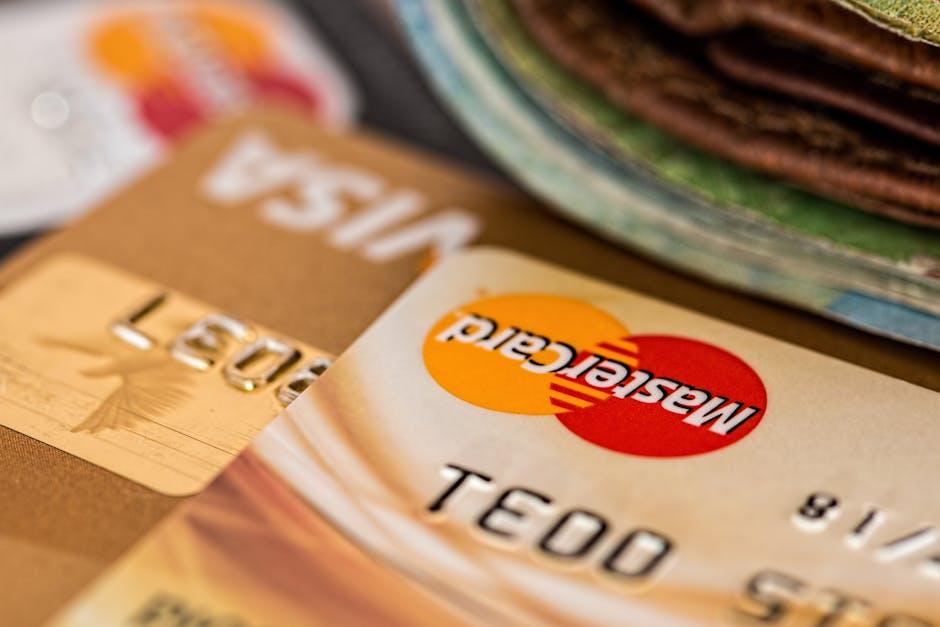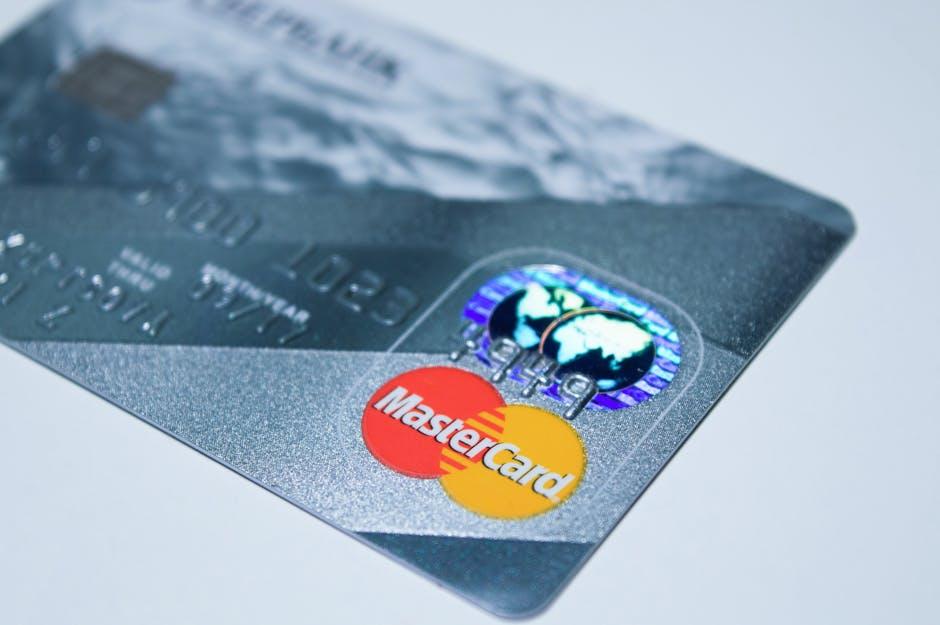In today’s financial landscape, managing multiple credit cards can feel like a juggling act, with countless offers and rewards vying for your attention. While it may seem daunting, mastering your credit card accounts is not only achievable but can also serve as a powerful strategy for optimizing your spending and enhancing your financial stability. From maximizing rewards to avoiding pitfalls like missed payments, understanding the intricacies of each card can empower you to make informed decisions. In this article, we will explore smart tips and effective strategies that will help you maintain control over your credit responsibilities, ensuring you reap the benefits without the stress. Let’s dive into the art of managing multiple credit cards with confidence and clarity.
Understanding the Importance of Credit Scores in Managing Multiple Cards
When managing multiple credit cards, understanding your credit score becomes crucial. This three-digit number significantly influences your financial journey, affecting everything from loan approvals to interest rates. Here’s why credit scores are essential in this context:
- Impact on Credit Utilization: Your credit utilization ratio-how much credit you’re using compared to your total credit limit-accounts for about 30% of your credit score. Keeping this below 30% is vital to maintaining a healthy score, especially when juggling multiple cards.
- Payment History Matters: Your payment history is the most significant factor in your credit score, making up 35% of it. Ensuring timely payments across all your accounts is not only crucial for avoiding late fees but also for enhancing your creditworthiness.
- High Credit Scores Equals Better Terms: A higher credit score can qualify you for better interest rates and credit offers. If you manage your cards well, you’ll likely secure more favorable terms when applying for mortgages, auto loans, or even new credit cards.
- Monitoring Opportunities: Regularly checking your credit score allows you to identify any discrepancies or signs of identity theft promptly. This awareness can help you take corrective action before these issues impact your score.
- Long-Term Financial Health: Managing multiple cards responsibly and maintaining a healthy score can lead to long-term benefits, including lower insurance premiums and improved access to capital.
To illustrate the relationship between your credit score and managing multiple credit cards, consider the following table:
| Factor | Impact on Score (%) | Best Practices for Multiple Cards |
|---|---|---|
| Payment History | 35% | Always pay bills on time; set up reminders or auto-pay. |
| Credit Utilization | 30% | Aim to keep usage below 30% of your total limit. |
| Credit History Length | 15% | Keep older accounts open to enhance your average credit age. |
| Credit Mix | 10% | Utilize a mix of credit types (like installment loans and revolving credit). |
| New Credit Inquiries | 10% | Limit applications for new credit to avoid unnecessary hits on your score. |
By thoroughly understanding these components, you can strategically manage your multiple credit accounts, enhancing your credit score and achieving your financial goals.

Strategic Prioritization for Payments and Rewards Optimization
When managing multiple credit card accounts, strategic prioritization is essential for optimizing payments and rewards. By aligning your financial goals with a well-considered approach, you can maximize your benefits while minimizing costs. Here are several key strategies to focus on:
- Understand Your Rewards Structure: Each card offers different rewards systems-cashback, points, or miles. Identify which cards have benefits that match your spending habits.
- Prioritize High-Interest Debts: Focus on paying off cards with the highest interest rates to avoid unnecessary charges over time.
- Take Advantage of Sign-Up Bonuses: If you’re considering a new card, look for those offering substantial sign-up bonuses and strategically plan your purchases to meet requirements.
- Monitor Expiration Dates: Keep track of when rewards points or cashback expire, so you can utilize them before they go to waste.
- Use Payments to Build Credit: Make timely payments on all your accounts to enhance your credit score, which can lead to lower rates and better offers.
Implementing an optimal payment cycle can provide substantial benefits. For instance, consider using a table to track the payments and rewards associated with each card:
| Card Name | Rewards Type | Annual Fee | Current APR | Sign-Up Bonus |
|---|---|---|---|---|
| Chase Freedom | Cashback | $0 | 15.99% | $200 after spending $500 |
| American Express Gold | Points | $250 | 16.24% | 60,000 points after spending $4,000 |
| Capital One Venture | Miles | $95 | 17.49% | 50,000 miles after spending $3,000 |
Regularly reviewing your payment strategies ensures that you stay ahead of changes in the financial landscape. A focus on payment optimization can lead not only to enhanced rewards but also to significant cost savings when managed effectively.

Creating a Sustainable Budget to Avoid Debt Pitfalls
Creating a sustainable budget is essential for managing multiple credit cards effectively and avoiding the pitfalls of debt. Here are some strategies to help you establish a budget that not only meets your needs but also keeps your finances on track.
- Assess Your Income: Begin by calculating your total monthly income, including salary, bonuses, and any side hustles. This sets a realistic foundation for your budget.
- Track Your Expenses: Categorize your spending into fixed (rent, utilities) and variable (entertainment, groceries) expenses. Use budgeting apps or spreadsheets for detailed tracking.
- Prioritize Essential Spending: Ensure that your essential expenses are covered first. This includes housing, food, insurance, and minimum payments on credit cards.
- Set Debt Reduction Goals: Allocate a portion of your budget to pay down credit card debt. Focus on high-interest cards first to minimize long-term costs.
- Incorporate Savings: Aim to save a part of your income each month. Even a small amount can grow over time and provide a financial cushion.
To visualize your budget and make adjustments more manageable, consider this simple table:
| Expense Category | Monthly Amount | Priority Level |
|---|---|---|
| Housing | $1,500 | High |
| Utilities | $300 | High |
| Groceries | $400 | Medium |
| Entertainment | $150 | Low |
| Debt Payments | $200 | High |
| Savings | $100 | Medium |
Be flexible with your budget. If unexpected expenses arise, adjust other areas to compensate. Additionally, review your budget regularly, ideally each month, to remain aligned with your financial goals.
Finally, utilize resources such as the Consumer Financial Protection Bureau, which offers tools and tips for budgeting and managing credit cards. By following these principles, you create a strong foundation to maintain a sustainable budget and prevent debt-related stress.

Leveraging Tools and Apps for Seamless Account Management
Managing multiple credit card accounts can feel overwhelming, but with the right tools and apps, it can become a seamless experience. By leveraging technology, you can keep track of your balances, monitor spending, and even optimize rewards across different cards. Here are some effective strategies to streamline your account management:
- Mobile Banking Apps: Most major banks and credit unions offer mobile apps that allow you to check your balances and make payments on the go. Popular choices include Chase Mobile, Bank of America, and Capital One.
- Budgeting Tools: Applications like You Need a Budget (YNAB) or Mint help you set budgets, track your expenses by category, and notify you of upcoming bills-all in one place.
- Reward Tracking Apps: If you’re using multiple cards to maximize rewards points, consider apps such as MaxRewards or AwardWallet. These apps allow you to track your rewards and expiration dates conveniently.
- Automatic Alerts: Set up alerts through your banks’ apps to receive notifications about payment due dates, upcoming charges, or spending limits. This can help you avoid late fees and maintain healthy credit utilization ratios.
- Virtual Wallets: Integrate your credit cards with virtual wallets like Apple Pay or Google Pay. This not only speeds up the checkout process but also adds a layer of security to your transactions.
Utilizing these tools can greatly enhance your ability to manage multiple accounts effectively. To further support your financial journey, consider the following table:
| App/Tool | Primary Benefit | Best For |
|---|---|---|
| Chase Mobile | Account management and payment features | Chase bank customers |
| Mint | Budget tracking and expense management | General budgeting needs |
| MaxRewards | Tracking credit card rewards | Frequent flyers and reward enthusiasts |
| You Need a Budget (YNAB) | Proactive budgeting tools | Budgeters seeking to gain control over finances |
| Apple Pay | Convenient transactions and security | iPhone users |
By integrating these apps into your financial routine, you can achieve a more organized approach to managing your credit cards, ultimately leading to improved financial health and peace of mind.

In Conclusion
In conclusion, mastering the art of managing multiple credit cards can be a rewarding endeavor, offering flexibility and financial benefits when approached with care and strategy. By employing the smart tips outlined in this article, you can navigate the complexities of credit management with confidence. Remember, the key is to maintain a clear understanding of your spending habits and repayment schedules, enabling you to harness the potential of credit cards while avoiding pitfalls. As you embark on this journey, let knowledge and mindful practices guide you to financial wellness and peace of mind. Embrace your new skills, and may your credit journey be both rewarding and insightful.














